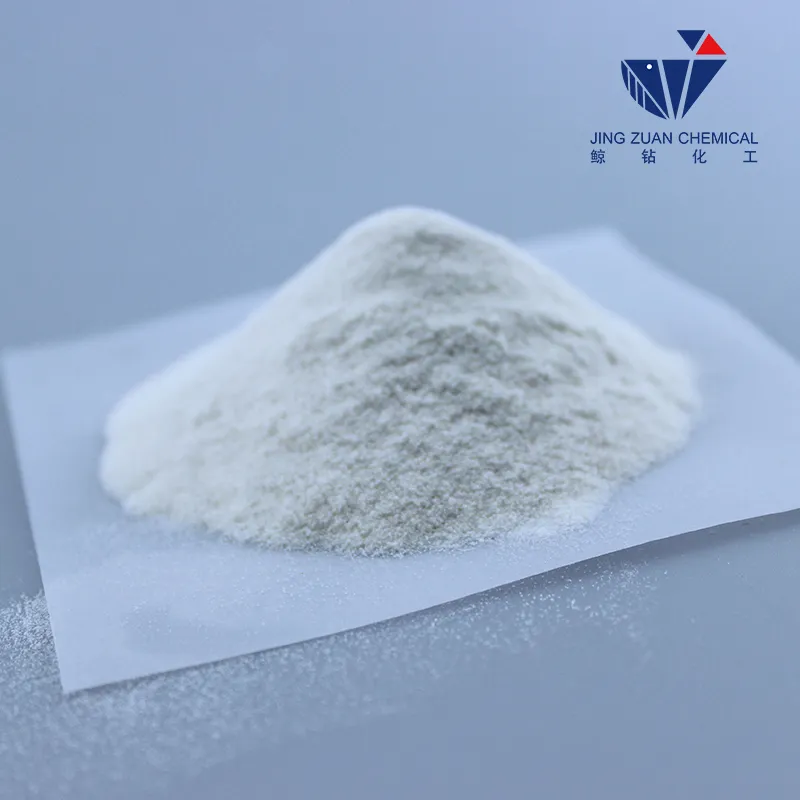
Dec . 11, 2024 01:10 Back to list
Understanding the Structure and Properties of Hydroxyethyl Cellulose for Various Applications
Understanding Hydroxyethyl Cellulose Composition and Structure
Hydroxyethyl cellulose (HEC) is a water-soluble polymer derived from cellulose, a natural polymer that serves as a structural component in the cell walls of plants. The modification of cellulose through ethylene oxide (ethylene oxide is a small, gaseous molecule) results in the formation of hydroxyethyl cellulose, which has a variety of applications in different industrial sectors due to its unique properties.
Chemical Structure of Hydroxyethyl Cellulose
The fundamental structure of hydroxyethyl cellulose consists of a cellulose backbone that has undergone etherification. In this process, some of the hydroxyl groups (-OH) on the glucose units of cellulose are replaced by hydroxyethyl groups (-OCH2CH2OH). This substitution transforms the once rigid and insoluble cellulose into a more flexible and soluble compound in water.
The cellulose molecule is composed of β-D-glucose units linked by β-1,4-glycosidic bonds, forming a long, linear chain. In HEC, the degree of substitution—the average number of hydroxyethyl groups per anhydroglucose unit—can be controlled during synthesis and influences the properties of the resultant polymer, such as its solubility and viscosity. For instance, an HEC with a higher degree of substitution is often more soluble in water and can generate higher viscosity solutions.
Properties of Hydroxyethyl Cellulose
The chemical modifications that create hydroxyethyl cellulose impart several key properties
1. Water Solubility HEC is soluble in water and exhibits a good degree of solubility in various pH conditions. This quality makes it particularly valuable in formulations that require thickening and stabilizing agents.
2. Thickening Agent Due to its ability to increase the viscosity of solutions, HEC is widely used as a thickening agent in a variety of products, including paints, coatings, cosmetics, and personal care items.
3. Film-forming Capability HEC has excellent film-forming properties, allowing it to create a film over surfaces, which is essential in adhesives and coatings.
4. Non-ionic Nature Being a non-ionic polymer, it does not carry any electrical charge. This characteristic makes HEC compatible with a wide range of other substances, including both cationic and anionic materials, thereby enhancing its effectiveness in diverse formulations.
hydroxyethyl cellulose structure

5. Biodegradability As a derivative of cellulose, HEC is environmentally friendly and biodegradable, making it a preferred choice in sustainable products.
Applications of Hydroxyethyl Cellulose
The versatility of hydroxyethyl cellulose leads to its broad range of applications across multiple industries
1. Cosmetics and Personal Care HEC is commonly used as a thickener, stabilizer, and emulsifier in lotions, shampoos, and creams. Its ability to enhance texture and feel makes it a favored ingredient in formulations aimed at improving skin and hair quality.
2. Pharmaceuticals In the pharmaceutical industry, HEC is utilized as a controlled-release agent, thickening agent in gels, and binder in tablets, owing to its compatibility with various medicinal compounds.
3. Food Industry Because of its non-toxic and safe characteristics, HEC finds usage in food products as a thickener and stabilizer, ensuring uniform consistency and extended shelf life for sauces, dressings, and cosmetics.
4. Construction In construction, HEC is used in cement-based products to enhance the workability and performance of mortars and grouts, facilitating their application and durability.
5. Paints and Coatings It functions as a thickening agent in paints and coatings to improve flow and leveling properties, ensuring smoother application and a better finish.
Conclusion
Hydroxyethyl cellulose represents a significant advancement in polymer technology, combining the fundamental properties of cellulose with the beneficial enhancements brought about by chemical modification. Its unique structure endows it with a range of desirable properties, making it invaluable in numerous industries, from cosmetics to construction. As we continue to explore sustainable and effective solutions in various sectors, the demand for HEC is likely to remain strong, reinforcing its position as a pivotal material in modern applications.
-
Versatile Hpmc Uses in Different Industries
NewsJun.19,2025
-
Redispersible Powder's Role in Enhancing Durability of Construction Products
NewsJun.19,2025
-
Hydroxyethyl Cellulose Applications Driving Green Industrial Processes
NewsJun.19,2025
-
Exploring Different Redispersible Polymer Powder
NewsJun.19,2025
-
Choosing the Right Mortar Bonding Agent
NewsJun.19,2025
-
Applications and Significance of China Hpmc in Modern Industries
NewsJun.19,2025







